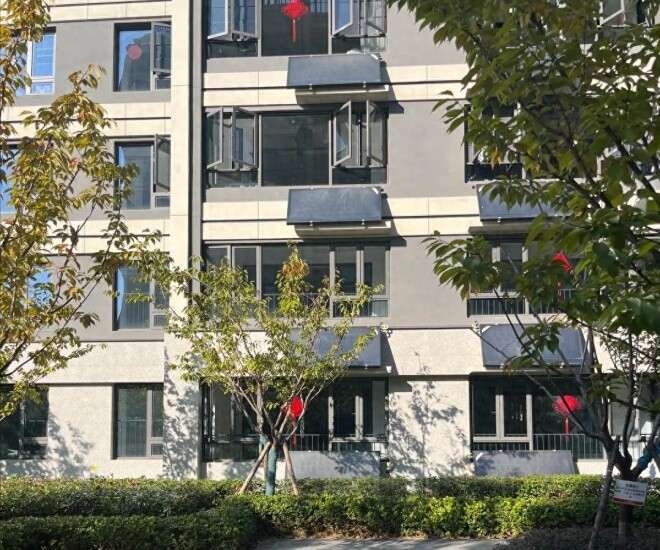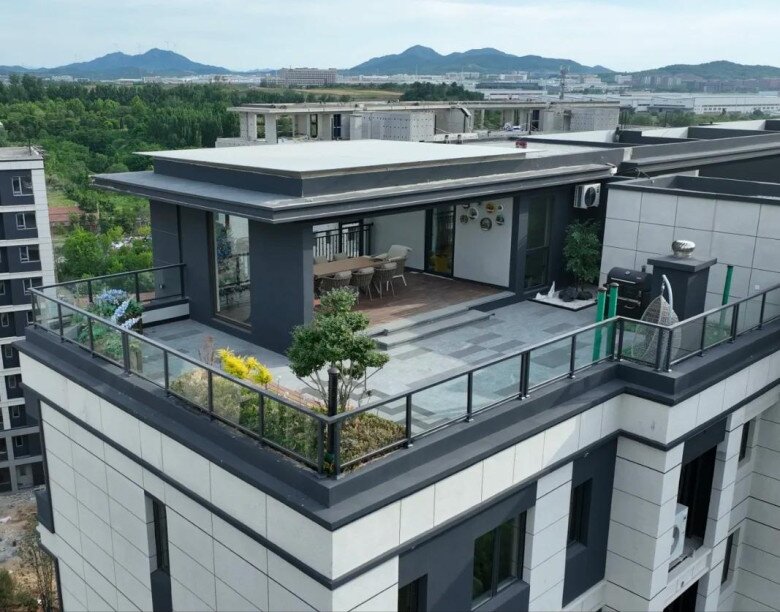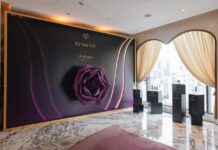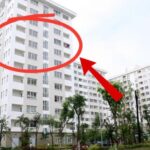What truly impacts long-term living experiences are the often overlooked “trap floors” that many people ignore. At first glance, everything seems fine, but once you move in, numerous inconveniences arise, making it difficult to sell later.
So, which floors should you avoid even if offered for free? Let’s explore right away.

1. Ground Floor
There’s no denying the convenience of the ground floor, especially for families with elderly members or young children. However, those who’ve lived on this floor know the countless inconveniences it brings.
First is the issue of dampness. Being close to the ground, moisture rises noticeably, especially during humid seasons or rainy periods in the South. Walls easily mold, corners stay damp, and wooden furniture deteriorates quickly.
Next are insects. Living near the ground means sharing space with mosquitoes, ants, and cockroaches. A slightly open door or window invites unwelcome guests.
Third is noise. The ground floor is often near internal roads, parking areas, and common pathways, leading to constant sounds of horns, conversations, motorcycles, and electric vehicles, especially during peak hours, erasing any sense of privacy.
Lastly, privacy and lighting are compromised. Opening curtains exposes your home to passersby, while keeping them closed creates a dark, stuffy environment lacking natural light and ventilation.
If you prefer the ground floor, opt for a unit with an elevated design or a private garden to enhance airflow and privacy. Otherwise, long-term living may become uncomfortable and inconvenient.

2. Second Floor
Many consider the second floor the “golden floor” due to its moderate height, easy access, and no long waits for the elevator. However, it often concentrates the most inconveniences.
First, being close to the ground means enduring noise, dust, and insects. Vehicle sounds, passersby, and road dust are as bothersome as on the ground floor, without the convenience of quick entry and exit.
Second, the second floor often lacks views and natural light. It’s neither high enough for scenery nor low enough for convenience. Surrounding trees or buildings can block sunlight, leaving the home dim, damp, and uncomfortable.
Another overlooked issue is noise from garages or shops below. Sounds like rolling shutters or vehicles entering early in the morning or late at night can disrupt sleep at any time.
Lastly, the second floor is one of the hardest to resell. Many avoid it due to these issues, leading to prolonged listings, lower prices, and potential devaluation.
The second floor isn’t unlivable, but if you choose it, prepare for less comfort than expected and lower liquidity. Don’t buy just because it seems “convenient.”

3. Penthouse
The top floor impresses with its wide views, unobstructed by surrounding buildings, but behind its “luxurious” appearance lies a host of inconveniences.
First is the temperature issue. Despite good insulation, the penthouse bears the brunt of direct sunlight. In summer, temperatures are often higher than mid-floors by several degrees, requiring 24/7 air conditioning to avoid overheating.
Winter isn’t better. Heat tends to accumulate on lower floors, leaving the top floor cold and damp. Many describe it as “extreme in every season.”
The biggest nightmare is water leakage. Even minor waterproofing issues can cause roof leaks during light rain. Repairs are costly and time-consuming, with building management often shifting responsibility.
And then there’s the elevator. During power outages or malfunctions, penthouse residents suffer the most, facing not only exhaustion but also daily inconveniences from climbing stairs.
If you insist on a penthouse, ensure it has proper heat and waterproofing, and that the building management is professional. Otherwise, you may face long-term discomfort despite its appealing appearance.

4. Floors Near Technical Rooms
In many high-rise buildings, technical floors like the 12th or 18th house water tanks, pumps, ventilation fans, and electrical equipment. Officially non-residential, living near these floors means enduring constant noise day and night.
Noise is the most obvious issue. When pumps operate, a humming or vibration spreads through floors and walls, especially noticeable at night, disrupting sleep without an apparent cause.
Another overlooked issue is electromagnetic radiation. Continuous operation of equipment emits low-level radiation, which, while not immediately harmful, is best avoided for the elderly, children, or sensitive individuals in the long term.
Units near technical floors also depreciate faster. Despite new or well-advertised properties, proximity to technical floors makes them harder to sell, with prices below market averages. Sales agents often gloss over this detail, leading buyers to overlook it.
Before buying, carefully review floor plans and ask about technical floors, avoiding units directly above or below them to protect your sleep quality.
5. Floors Near Trash Chutes
Many older and even some new apartment complexes feature shared trash chutes on each floor, seeming convenient for quick disposal. However, those who’ve lived nearby know it’s a constant nuisance.
Odor is the first issue. Trash left in the chute without timely removal, especially in summer, emits a strong smell that permeates the entire floor, from hallways to individual units, lingering even with slightly open doors.
Next are insects and rodents. No matter how clean your home is, cockroaches, flies, and even rats can enter via the trash chute. Once infested, eradication is extremely difficult.
Even in new buildings with enclosed trash systems, long-term effectiveness against odors and pests diminishes without regular cleaning and disinfection.
When house hunting, don’t just focus on room size or balcony views. Ask about trash chute locations and waste management areas to avoid discovering a mini-landfill outside your window after purchase.

































